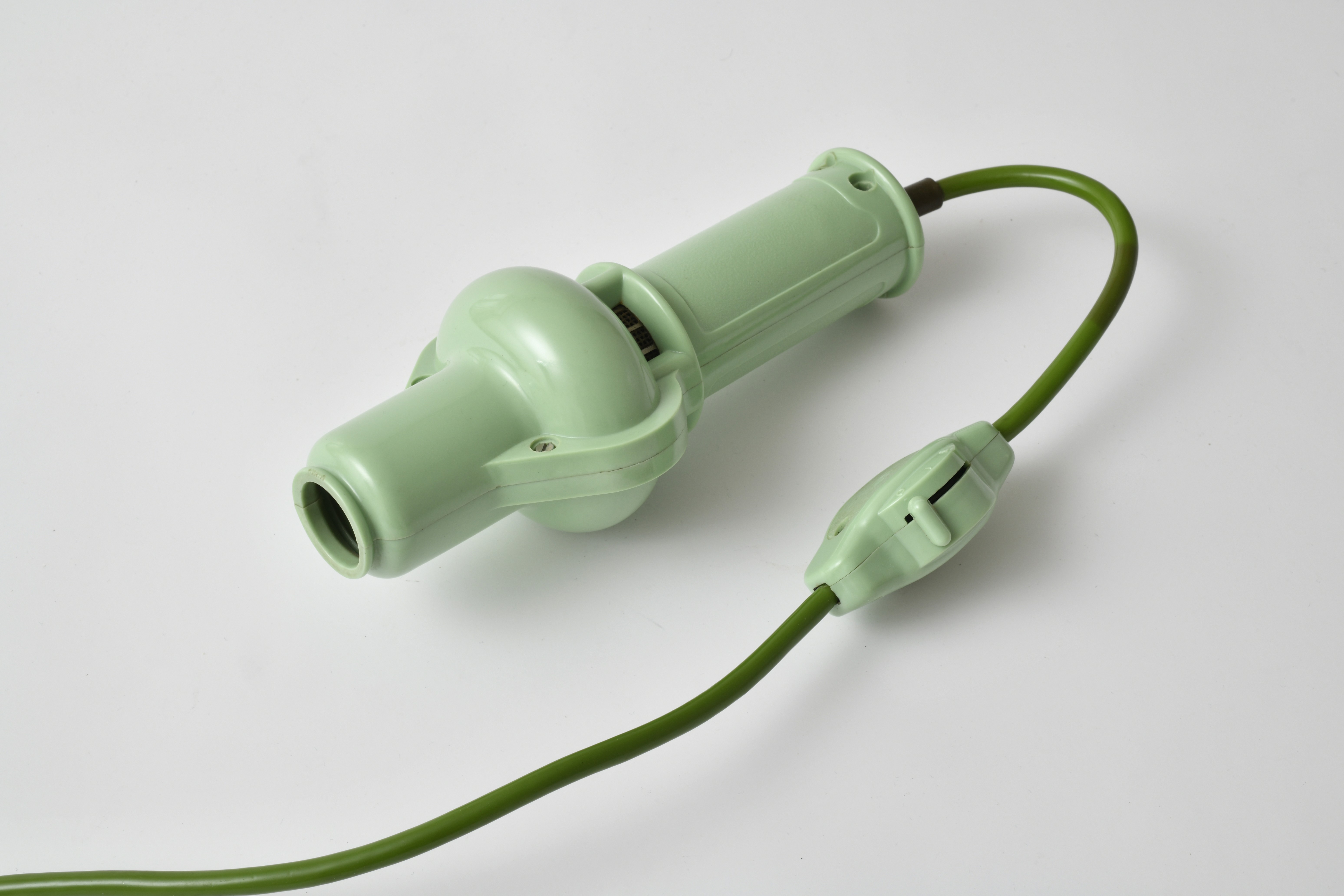Der grüne Stab-Föhn hat einen zylindrisch geformten Griff, der in eine bauchige Wölbung übergeht und wiederum in einer zylindrischen Form mündet. Während der Griff raue Flächen erhielt , bleibt die Oberfläche sonst glatt. Der ebenfalls grüne Schalter für die Stufen 0 bis II ist an der Kabelschnur angebracht.
Unter dem Markennamen „Komet“ vertrieb das Suhler Elektrogerätewerk seine Produkte bis Ende der 1960er Jahre. Dieser Haartrockner vom Typ 7023.5 wurde zudem als „Heißluftdusche“ angeboten.
en

